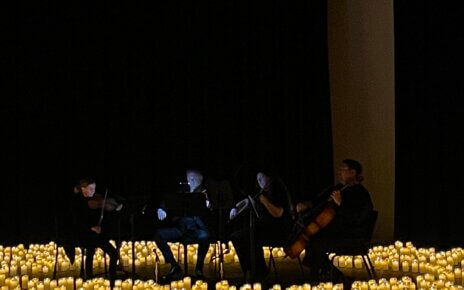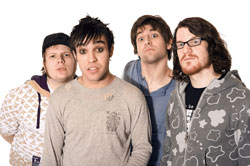In quarantine, our only outlets of escape are through our TVs and laptops. Whether it’s shows, movies, or browsing the web, both can serve as good time killers or something to distract you from the terrible news every day. But we can’t even escape the depressing news through our only outlets.
Friday night I was watching Discovery Channel’s Gold Rush: Dave Turin’s Lost Mine to obviously be entertained and keep my mind off of what’s going on, yet the commercials felt like watching CNN.
Most of the companies that advertised have changed their campaigns to address our current climate. Companies like Burger King, State Farm, Hyundai, Verizon, T-Mobile, and even Buick had messages catered towards the worried at home. Each commercial had a similar tone of, “In these uncertain times, one thing is certain: that we are always here for YOU.”
For Burger King, they took a serious tone and said their employees would run the food out to your car if you purchased through their app. Meanwhile, State Farm took a lighter tone with gospel music playing in the background and informed how their agents are still accessible digitally for any client needs. Then, to take the cake, Hyundai vowed to freeze any car payments to those who have lost their job to COVID-19.
The impactful ads didn’t stop at the companies because Discovery Channel had their own COVID-19 campaign. In one commercial, they had all of the channel’s biggest stars (who?) sending out a message that we can all get through this. Then in another ad, Mitch Blaschke, a mechanic on their hit show Gold Rush, filled viewers in on how he’s handling quarantine at home.
I’m not the only one who has noticed a change in tone from advertisers and channels. Specialist Communications Professor Robert Scott shared what commercials he has seen from companies in these unprecedented times: “I’ve noticed several effective spots — especially from utility companies, internet service providers, retail and fast food chains — that focus more on a sense of community than a direct promotion of products and services. Some of them simply feature company CEOs offering best wishes to their customers, often referring to them as “family” or “community” members,” Scott said.
Scott also recognized how businesses all share a common message. “These ads emphasize that we are all going through the same challenges together. They are typically simple to produce, cost effective and, when presented with the appropriate tone, can be effective in enhancing brand awareness and loyalty.”
It’s unbelievable how quickly advertisers have responded to the pandemic. A few weeks ago they ran all normal advertisements, with some still saying, “Come by our place and check out the latest stuff!” Today, companies are more fervent in driving online sales or deliveries.
Not only have those old ads been pulled, but some industries have entirely backed out of advertising entirely. You no longer see ads pushing for the next big budget Disney movie in theaters, concerts coming to town, or restaurants asking folks to come sit down for a bite. Scott also noted that the travel industry in particular has been taking a vacation from advertisements.
With advertisers pulling their campaigns, not only is it hurting businesses spreading awareness about their companies, but it’s a blow to the revenue stream of TV stations. “While news viewership is on the rise during the pandemic, live sports (with its highly targeted demographics) has taken a major hit, and the TV industry was already losing customers to streaming services,” Scott stated. He continued, “So now advertisers are contending with additional challenges, not only where to locate sought after audience demographics, but where to get the most from their investment and what tone is ideal during a global pandemic.”
While streaming viewership has been on the rise as people stay home and theaters remain shuttered, Scott thought that many companies will bring their campaigns to those services instead. “Some are transitioning their focus to digital and social media while pulling their money from television,” he suggested.
In regard to the streaming world, they have had their fair share of COVID-19 advertising too. While watching Angel on Hulu, Carvana commercials kept popping up that addressed how their changing services for customer safety. The company insisted that when you buy a car through their website, someone will deliver the vehicle to your door, through what they call a “touchless delivery.” Right after that commercial, the show turned back on and a vampire threw a person out the window.
Another component to advertising that has gone out the window is the production behind them. Scott shared his thoughts on how the way commercials are put together will change. “Another challenge with this particular virus is that productions have temporarily shut down, so we’re soon going to see more ads that use tools available to artists working remotely. We should expect to see more ads that rely on animation, computer-generated images, stock footage, visual effects, possibly even user-generated content recorded on our smartphones,” he concluded.
As we become couch potatoes in the coming months, these commercials will be the new normal. Companies will share uplifting messages and decide to focus less on trying to sell a product. But while their messages are hopeful, TV networks are drowning to find advertisers and other companies have ditched their efforts entirely.




